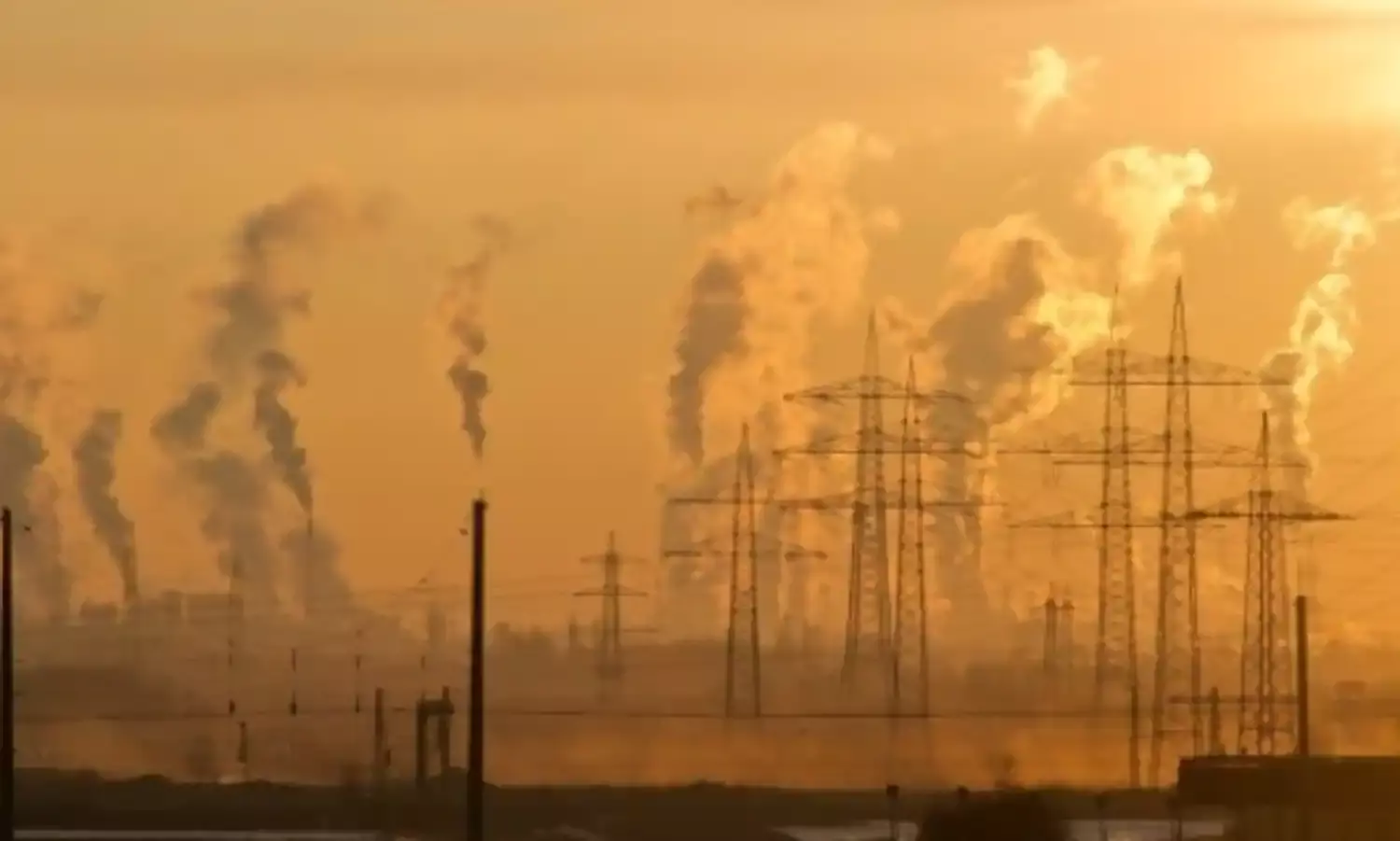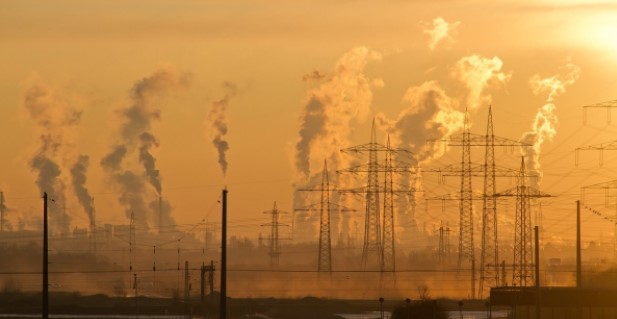Politics and Air Pollution
Delhiites breathed clean air for 9 days in the last 5 years

Every year with the onset of winter, the capital of our country is exposed to the most dangerous air pollutants. As air pollution rises, the Union and Delhi governments blame each other instead of making serious efforts to reduce it, and eventually the entire blame is shifted to the states around Delhi.
When the paddy crop is harvested in early October, there is very little time left for sowing the next crop. Under compulsion, the burning of paddy straw spreads smoke in the air and pollutes the air, leaving all these states around Delhi in the grip of air pollution.
Last October as the level of air pollution in Delhi began to rise, an ordinance issued by the Union government to deal with it was immediately implemented in the states around Delhi (Punjab, Haryana, Uttar Pradesh and Rajasthan). Violators could face up to five years in prison or a fine of Rs 1 crore, or both. The ordinance was issued by the Union government only to teach a lesson to the farmers as they have been protesting against the three agriculture laws enacted that summer.
Since that ordinance our governments seem to have forgotten that Delhi is struggling with air pollution.
Two research studies on rising air pollution in Delhi last month reveal a worrying situation. One of these studies, conducted by the University of Chicago, estimates that the life expectancy of people living in Delhi could be reduced by 9.5 years due to high levels of air pollution. The average age of the people in the southern part of the country also suffers a decline because of hazardous air.
The second research study, conducted by doctors at the Lung Care Foundation of India and the Pulmocare Research and Education Foundation in Pune, looked at the effects of air pollution on the health of school going children in Delhi, Mysore, and Kottayam. The study finds that in Delhi, one in three school going children suffers from asthma, while in Mysore and Kottayam the share is one in four.
These studies show that the rising air pollution in Delhi is not related to any one particular month or season. It stays in Delhi all year round and Delhi has been in its grip for a long time. It is affecting everyone in Delhi, from children to the elderly. These research studies are based on facts, but sadly neither the Union government nor the Delhi state government have expressed any concern nor initiated any action.
Like every year, with the onset of October, the Union and Delhi state governments have started issuing statements on rising air pollution. Chief Minister Arvind Kejriwal has said that the air in Delhi remained clear till September, but by mid October, as a result of paddy straw burning in the neighbouring states, air pollution in Delhi would increase.
Kejriwal also said that states besides Delhi were not helping the farmers who were burning paddy straw and polluting the air. By contrast, he said, the Delhi government has distributed free Pusa bio-decomposers to the farmers of 39 villages in its area for composting paddy straw on their 1,935 acres of agricultural land with very good results.
With the spraying of Pusa bio-decomposer, the straw decomposes in the field in 15-20 days. The Delhi government can provide free bio-decomposers and other necessary facilities to the farmers in its area as its arable area is much less than the arable area of Punjab (1,05,00,000 acres) and it has a sound financial position compared to most other Indian states.
The problem of smog arises from burning of paddy straw when the wind speed and temperature is very low, and there is presence of smoke and dust particles and high humidity in the air. A research study conducted in 2020 by the Punjab Agricultural University, Ludhiana revealed that wind speed was so low in 2017, 2018, and 2019 that the pollution caused by paddy straw burning in Punjab and Haryana could not reach Delhi. Yet the air of these states was polluted by paddy straw burning.
The Delhi Chief Minister said that the air in Delhi was clean till September and now the burning of paddy straw would pollute it. According to the Meteorological Department of India, the monsoon rains in Delhi this year have broken several previous records. Delhi received 1,169.7 mm of rainfall this year, or 80 per cent more than normal. Heavy rains cause pollutants in the air to settle on the ground, which helps maintain a good air quality index.
According to the Central Pollution Control Board, Delhi's air quality index on September 18 was only 69 after heavy rains, a level considered not “good” but “satisfactory”. In addition, the concentration of PM10 and PM 2.5 was 67 and 27 per cubic meter respectively. As per the old WHO criteria, on September 18 the concentration of PM10 and PM 2.5 was 3.3 and 2.7 times higher than recommended limits, but according to the new standards (updated this year) the concentration is 4.6 times and 5.4 times higher respectively.
According to the Central Pollution Control Board, in the eight months from the start of January to the end of August 2021 in Delhi, not a single day did Delhi residents get good quality air. In 2020, Delhiites breathed fresh air for all of five days, while in 2019 and 2017 they got two days each. In 2018, Delhi's air quality was poor for all 365 days. So, in the last five years, the Delhi Air Quality Index has registered “good” air quality for only nine days.
According to a report by the Union Ministry of Environment, Forests and Climate Change, the total emissions of greenhouse gases from the agricultural sector in 2014 was 16 per cent, which has come down to only 14 per cent in 2016. The energy sector, which includes power generation and transportation, accounted for 72 per cent of greenhouse gas emissions in 2014 and 75 per cent in 2016.
Delhi is no exception to this fact. It is not the farmers in the agricultural sector or the states around Delhi who are responsible for Delhi's air pollution, but mainly Delhi's local sources. These facts came to light in Delhi even during the lockdown period in the days of the COVID-19 pandemic, but with the onset of winter, governments have started politicizing the issue again.
The Chief Minister of Delhi has formulated a 10-point Winter Action Plan to tackle Delhi's winter air pollution: (1) Stopping of paddy straw burning (2) Anti-dust campaign to be strengthened (3) Stopping the burning of garbage (4) Ban on firecrackers, (5) Installation of more smog towers (6) Monitoring of pollution hotspots (7) Strengthening of green war rooms (8) Monitoring the green Delhi app (9) Construction of eco-waste parks, and (10) Taking steps to minimise traffic jams to reduce vehicular pollution.
Only one of these ten points is related to agriculture and the states adjoining Delhi. No one can deny that burning paddy straw pollutes the air, but it is not fair or justifiable to place all the blame on it. Last year, the Union government itself admitted that burning paddy straw increased Delhi's total air pollution by 4-6 per cent and the remaining 94-96 per cent came from other sources.
Therefore, the Delhi government should take steps to curb the rising air pollution in Delhi by identifying local sources of pollution and not wasting time in trying unsuccessfully to absolve itself of all responsibility by blaming the neighbouring states. It should implement this 10-point Winter Pollution Action Plan (for a start) not only to reduce air pollution in winter but also to curb the rapidly increasing pollution throughout the year in Delhi in a systematic manner. Doing so would start reducing air pollution in Delhi.
According to IQAIR, some 34,000 people have died in Delhi by this time in 2021 due to air pollution and it has led to an economic loss of USD 5 billion. As a result of increasing air pollution, people are dying prematurely due to various diseases. What can children do for the future of the country when their own future is being tarnished by air pollution?
Therefore, the Union government should implement Delhi's 10-Point Winter Action Plan to save the present and future generations of the country, not just in Delhi but across the country.
It is the duty of our governments also to increase public transport in proportion to the population, and make it an efficient alternative to private transport, which emits far more pollutants per passenger.
Renewable energy sources should be used in all kinds of industrial units running on oil and coal, and for means of transportation.
The Delhi government should put a complete ban on uprooting of old trees in Delhi and plan to plant local trees in place of ornamental, harmful or invasive species, and take good care of the Aravalli hills and forests to save Delhi from sand-laden winds coming from Rajasthan. This will also help reduce pollution by absorbing the rising greenhouse gases.
If the Delhi government avoids the tendency to blame the farmers of the neighbouring states and follows the above suggestions and some other measures, air pollution in Delhi can be easily controlled.

Dr Gurinder Kaur is Former Professor, Department of Geography, Punjabi University, Patiala



